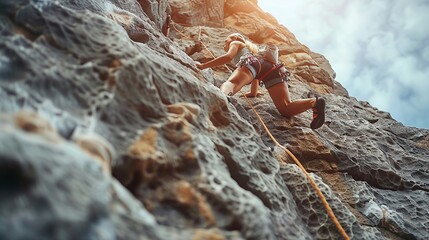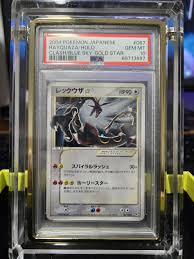Alta Climbing is a thrilling full-body exercise that provides an intense and exciting challenge. It works all of the major muscle groups as well as the tendons and ligaments.
It also requires incredible strength as athletes haul themselves up vertical walls, gripping onto holds – sometimes only big enough for the tips of their fingers.
Climbing is a popular sport for people of all ages and backgrounds. It’s also an extremely diverse sport, ranging from indoor bouldering to expeditionary climbing on mountains around the world. Climbing involves much more than just grabbing onto a wall, however, and proper technique is essential to climbing safely and efficiently. Understanding these fundamentals is important before you start to get hung up on specific routes.
Perfecting your climbing technique takes practice, but learning these basic concepts will give you a solid foundation from which to advance in whatever discipline of the sport you choose to pursue. To start off, we’re going to look at some common misconceptions about climbing, as well as a few important techniques that every climber should be familiar with.
A common misconception is that climbing is only about power and a strong biceps, when in reality, it’s more about the balance of dynamic and static movements. A climber who refuses to move dynamically is effectively lobotomizing half of their climbing skill set.
It is possible for people with a wide range of strengths and weaknesses to enjoy climbing, as long as they take the necessary precautions and develop their skills through consistent practice. A beginner should focus on developing these skills before trying to push themselves up a route that may be too difficult for them, leading to injury or disappointment.
The most fundamental of these skills is generating and harnessing momentum. This is best done by keeping the hips open and moving toward the wall in all scenarios except drop-knees. Harnessing momentum also means never allowing it to die, unless you’re intentionally resting on the route.
Another important concept is matching the right hold with the correct leg position. This is especially important on a bouldering route, where the ground may be unstable or even hazardous to fall on. Using the back flag is an effective way to gain leverage against the wall and stand into a hold that would otherwise be difficult to reach in the square position or with a regular foot-flag.
A final basic idea to remember is avoiding over-gripping hand holds. This is a common mistake that makes the climber fatigue very quickly. The arms are not the strongest muscles in the body, so relying on them will lead to epic forearm pumps and burnout fairly quickly.
Safety
When you’re on the edge of a wall with your hands and feet stretched to their limit, it can be easy to lose track of what’s happening around you. The rope provides a safety net, but there are other things that you can do to stay safe while climbing.
Having good communication is essential to your safety when paired with a belay partner. Make sure that you clearly communicate to your belayer when you need the rope taken snug or when you want it lowered. A few miscommunications like this could lead to a bad fall.
Another way to improve safety is to ensure that you have proper padding beneath you at all times. This last line of defense is vital for preventing injuries from falls off of the wall. Always check that there is a sufficient area of mats under you when bouldering. If you’re not sure, ask a staff member.
It’s also important to know how to descend properly when you’re done with your climb. If you fall from a height above waist high, you’ll want to land on both feet if possible to avoid injury. It’s also a good idea to not brace with your arms when falling. This can cause your knees to knock into each other and bruise.
Lastly, be prepared to self-rescue in the event of an accident. This can include having a plan for how you’ll get down the wall and having extra equipment (like an emergency headlamp) to help with your way down in case of darkness or inclement weather.
It’s also a good idea to wear a helmet at all times while climbing. This might seem obvious, but it’s an easy thing to forget when you’re having fun and the adrenaline is pumping. A helmet protects you from serious head injury that could potentially end your life. It may not be as cool to show off your big muscles, but it’s the best way to protect yourself and those around you.
Equipment
There is a wide range of equipment and supplies you’ll need to start climbing. Climbing equipment is constantly evolving and improving. New devices are helping climbers to scale ever more difficult routes and in ever safer conditions. Some of the most common and important pieces of equipment include ropes, belay devices, a harness, and a carabiner.
Ropes: You’ll need a dynamic rope for outdoor rock climbing, which will stretch to absorb the force of a fall. These ropes are generally 9.5mm to 11mm thick and have a variety of lengths, from 60m to 80m. A shorter rope is needed for sport climbing and for rappelling, while a longer rope is typically used for trad climbing or multi-pitch routes.
A belay device is used to control the rope while you’re climbing and protect you from falling too far. This device is an essential piece of climbing equipment and you should choose one that suits your needs based on the type of climbing you’re doing. A popular choice for beginners is a Petzl GriGri, which allows you to easily manage the rope and lock off the rope in case of a fall.
Nylon climbing slings are lightweight, versatile bits of equipment that you’ll use to wrap around sections of the rock. These are useful for building or extending anchors, and you can also use them as quickdraws. You’ll need several of these to complete a full climbing kit, and you may want a few pairs of locking carabiners as well.
You’ll also need a selection of protection devices to help you stay on the route, whether you’re leading or following. The simplest of these is a wired nut, which is a metal wedge threaded on a metal wire and attached to the rope via a carabiner. Other specialized protection devices include spring-loaded camming devices (SLCDs), hex’s and pitons.
If you plan to lead, you’ll need a belay partner to feed you the rope and catch your falls. Belay partners can be found at your local climbing gym or by asking around amongst fellow climbers. A trad climbing guide will be able to recommend a belay partner for specific routes.
Training
Climbing is a physically and mentally demanding sport. It works all of the major muscle groups in your arms, legs, core and back. It also improves balance, eye hand coordination and footwork. In addition, climbing helps develop mental acuity. Being able to focus without distraction is invaluable for those who want to excel at the sport, and has been shown to be beneficial for overall health.
There are many different types of climbing, each with its own unique equipment and techniques. The three main disciplines of rock climbing are bouldering, lead and sport climbing. Bouldering is an individual discipline, while lead and sport climbing involve using a rope with pre-fixed anchors fixed to a wall or crag.
While it is possible to climb without a rope, most people use one for safety reasons. There is a wide variety of rope lengths, but typically beginners will start with a 40m (131ft) rope. This allows them to climb routes of an appropriate level for their experience and skill, while still allowing them to fall without significant injury.
As you become more experienced, you will need to upgrade your equipment. For example, the shoes you wear will need to be more snug and sensitive to match the demands of harder routes. The fit is critical, as a shoe that is too loose will allow you to slip and lose control on difficult moves, while a shoe that is too tight will cause pain and restrict movement.
When you are ready to take your skills to the next level, you will need a guide to help you find the best routes and to teach you the techniques required for each discipline. UIAA-accredited guides and instructors are available throughout the world.
It takes a lot of patience and persistence to progress in climbing. Most climbers will fall on a route countless times before they manage to send it, and it can take weeks, months or even years to make that first ascent of a particularly difficult climb. However, the sense of achievement is immense when you do successfully complete a route that was previously out of reach.



